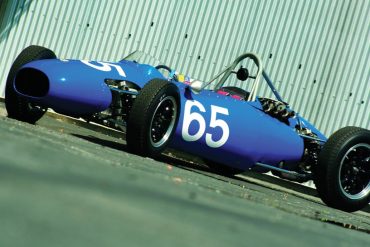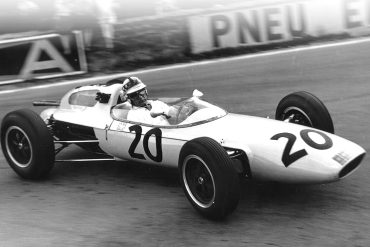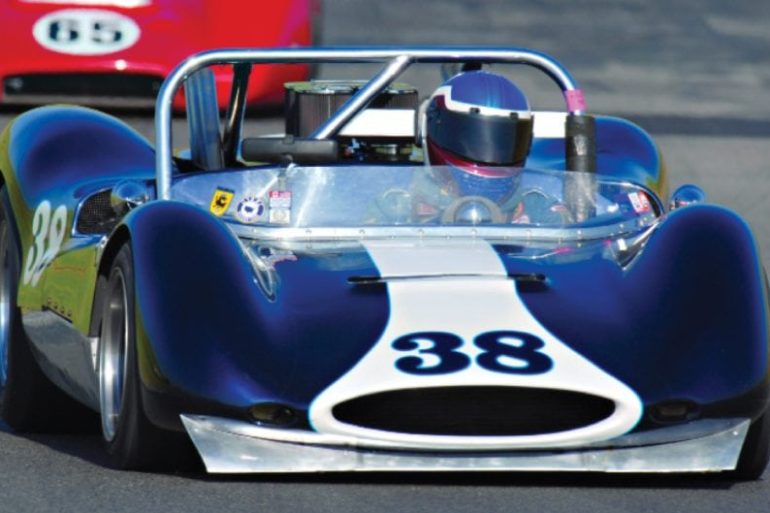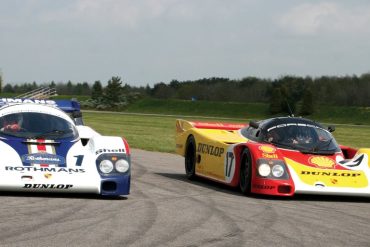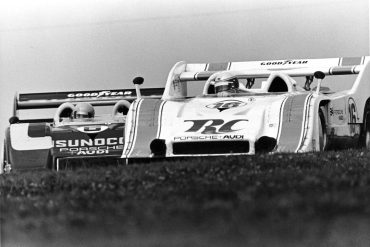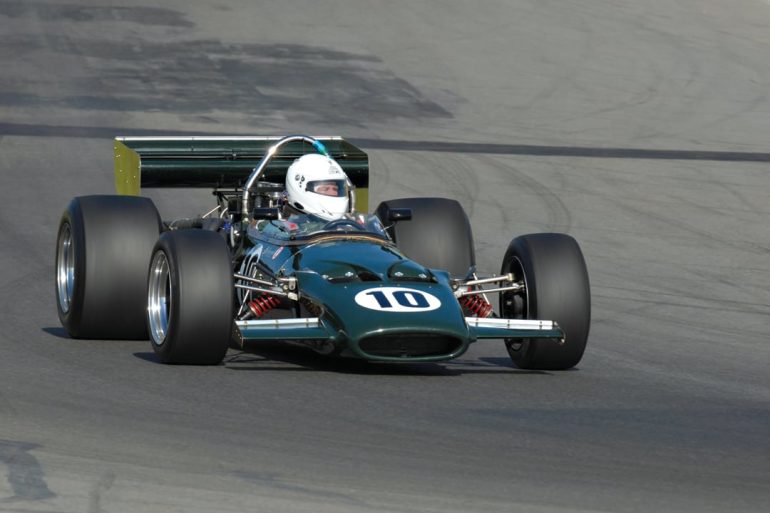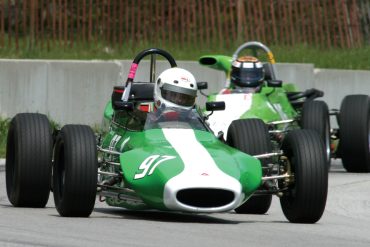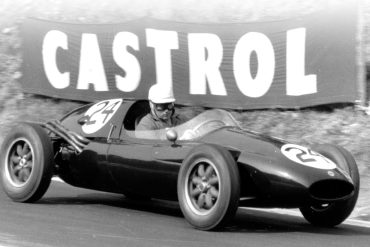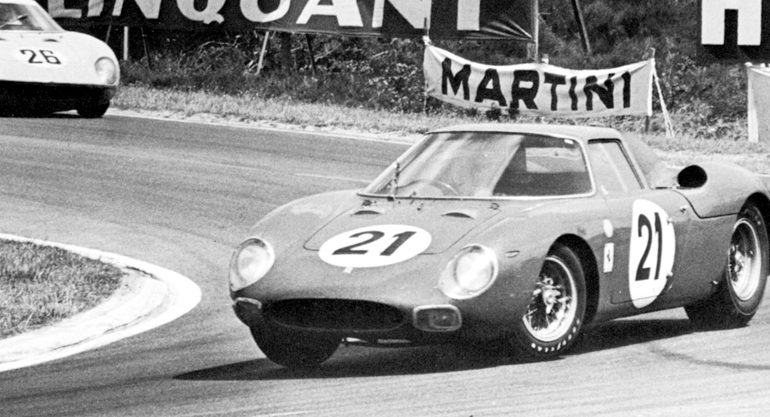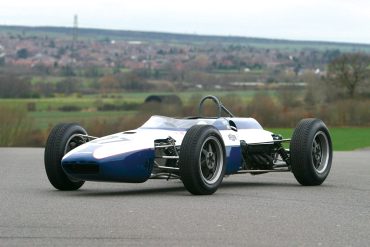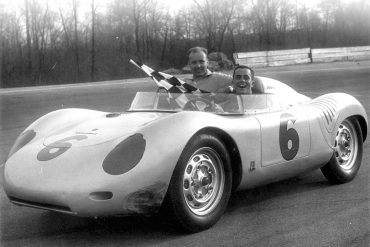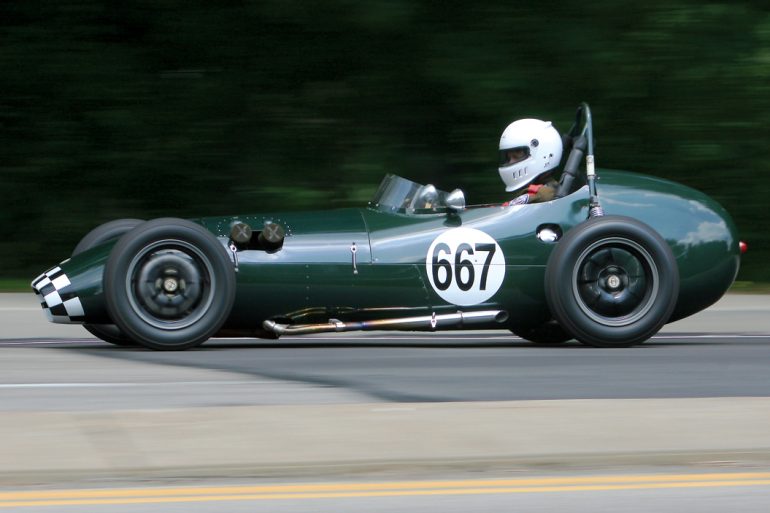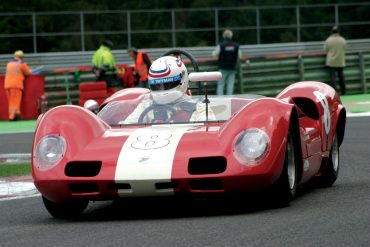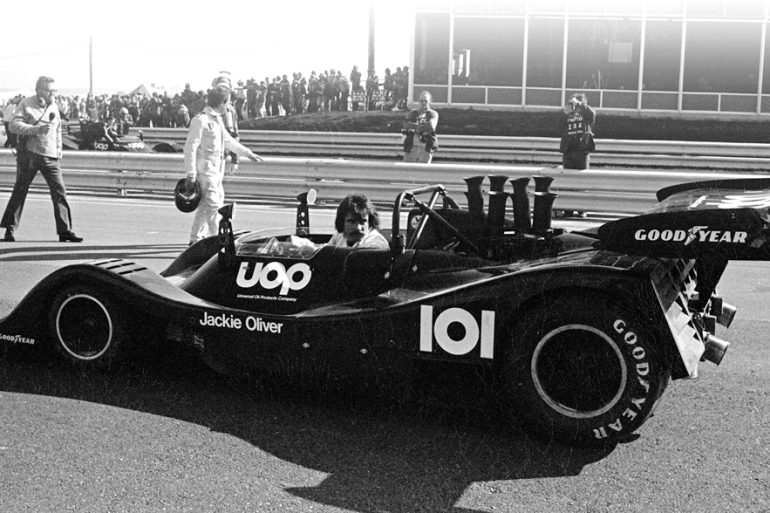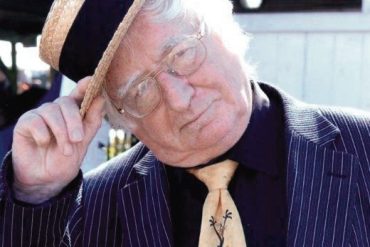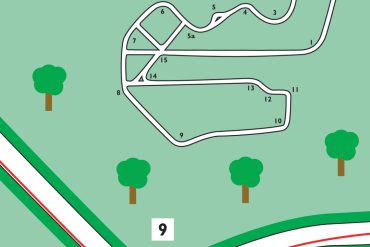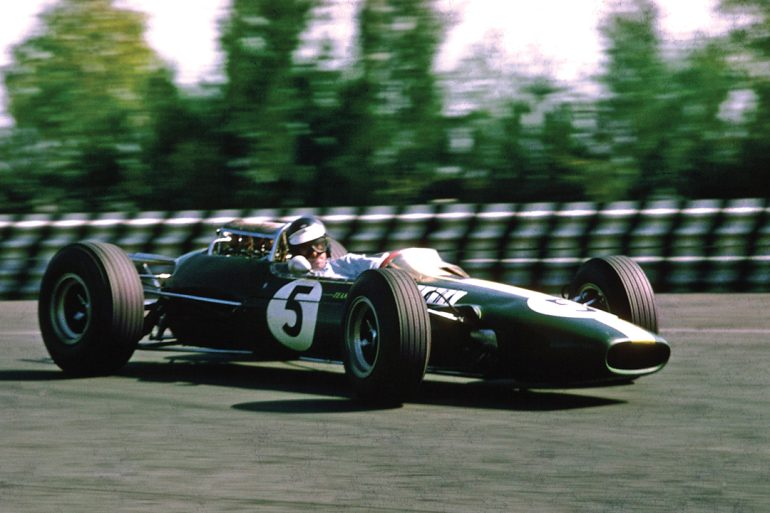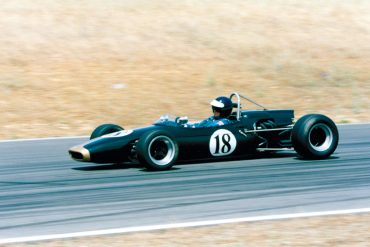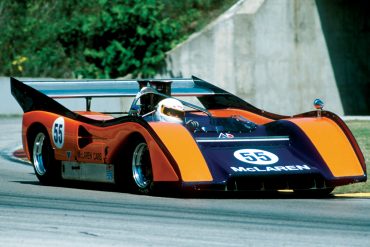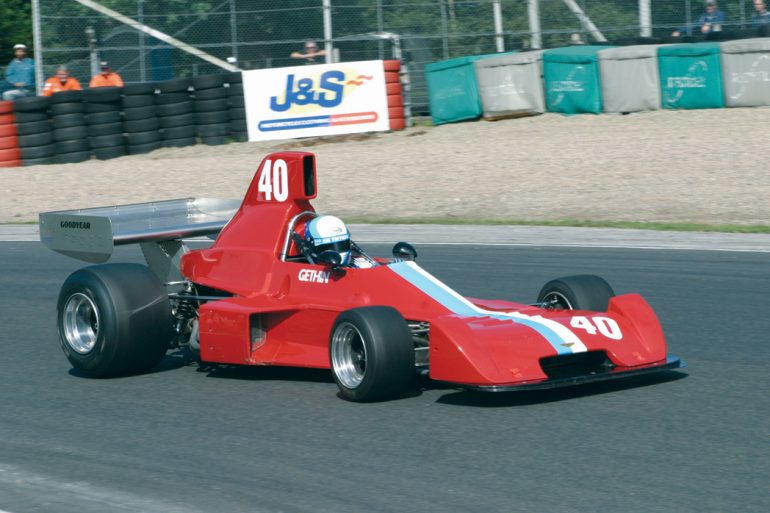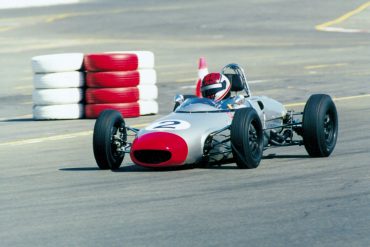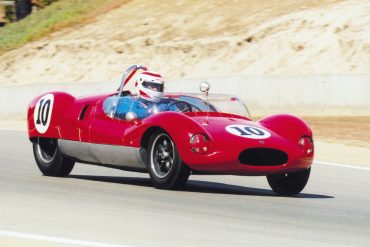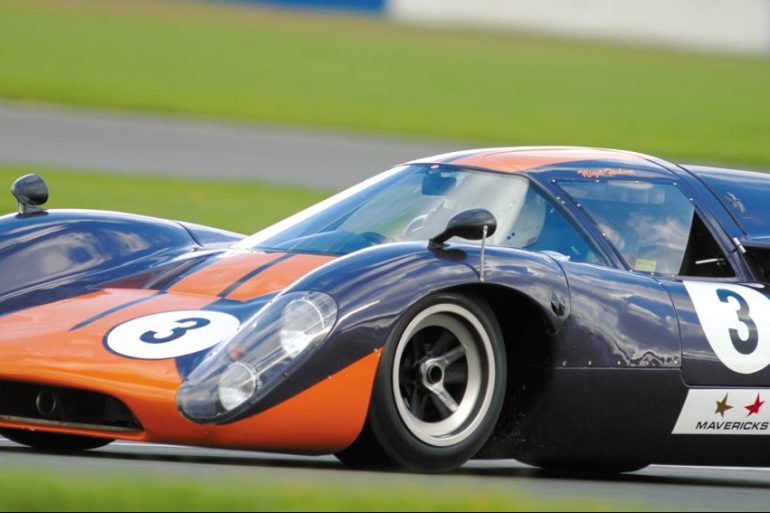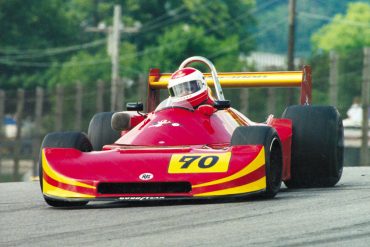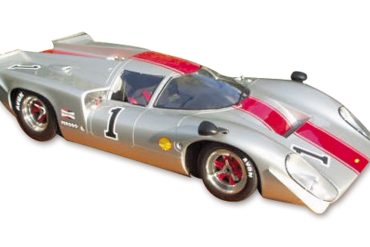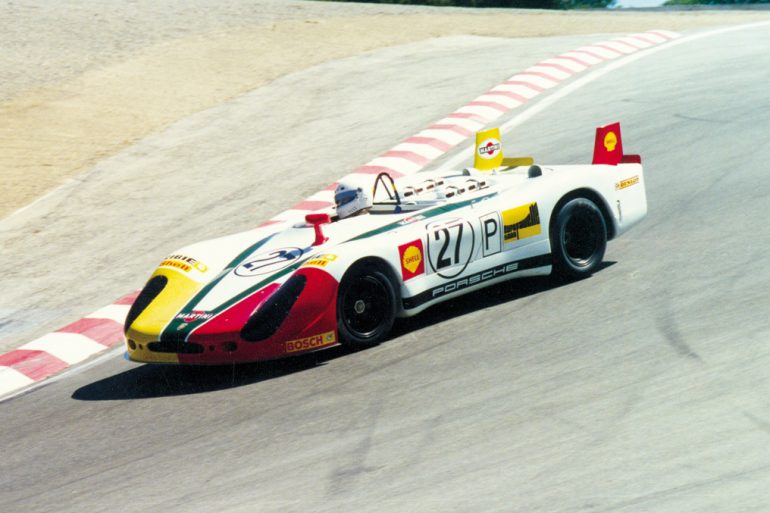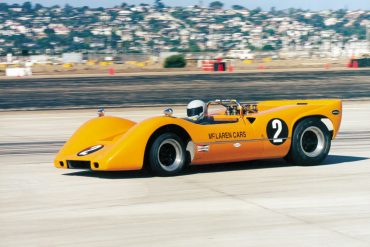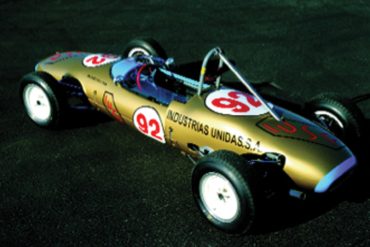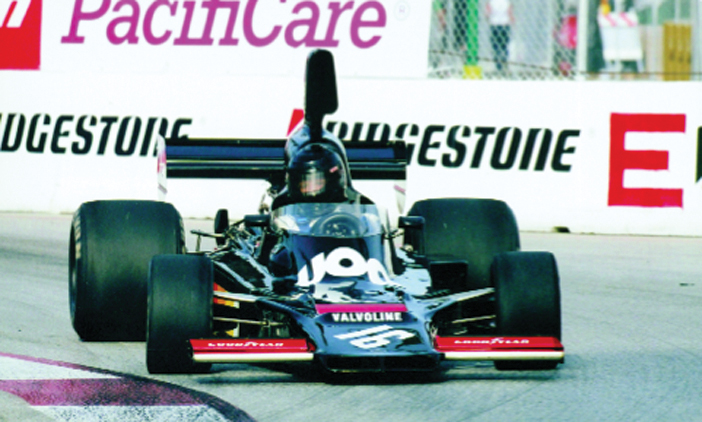1960 Kieft Formula Junior The history of British motorsport is rife with postwar racecar manufacturers that saw their genesis in...
Last Month, Mike Jiggle spoke with mechanic-turned-designer Tony Robinson about his early days in motorsport with Stirling Moss and the...
The Canadian American Challenge Cup was co-sanctioned by the SCCA and CASC—it was a series nicknamed the “unlimited” series. Although there was a basic set of rules, the cars had to be two-seaters with bodywork covering the wheels, have doors, a windscreen, brake lights and various safety requirements. However, there...
1982 Porsche 956 & 1988 Porsche 962 It is now 25 years since the Porsche 956 first appeared and started...
The Can-Am Porsche 917 The Can-Am Race Series, held from 1966 to 1974, helped propel professional sports car racing to...
Formula 5000 was a racing series for open-wheel, single-seater racing cars built to a specific set of rules. The engine of choice was the venerable small block Chevrolet V-8 of 5-liter displacement. It started as a bright idea in 1967 and ran successfully until politics between the governing body, race...
Formula Ford was a specification racing series created on the idea that the best drivers would win if they were...
From 500-cc racing to a works ride with Cooper and later a British Hillclimb Championship, Mike MacDowel has had a...
Jack Brabham Richard Petty 1 Dereck Bell, Hans Stuck, and Al Holbert drive a Rothmans Porsche 962 to victory in the 24 Hours of Le Mans. Jo Gartner dies in an accident during the early morning hours (1986). 4 Rick Mears drives a Penske PC-18 to victory in the CART...
1963 Scirocco By the time you read this, a superb collection of famous, bizarre, futile and fantastic Grand Prix cars...
There isn’t much Karl Kainhofer hasn’t done in over 50 years of involvement in motorsports, from motorcycle racing in Austria...
The Formula Junior Category was introduced in Italy in 1958 by Count Giovanni Lurani, and in 1959, it became an International Formula. Shortly thereafter, in 1960, the British began to take a serious interest in the category beginning the rivalry between British and Italian cars. The original FIA Formula Junior...
Jochen Rindt Richard Attwood 2 Dave Heinz and Dave Yarborough drive a Jaguar XJS from the U.S. Atlantic Coast to...
Two-liter sports racing cars have always had a place to compete within the ever-changing regulations of international motorsports: the World...
In our January 2007 issue, Pete Lyons shared some remarks about the grand old Canadian-American Challenge Cup series made by 14 influential men who were there. Ten drivers—including two Can-Am champions, a couple of designers, a crew chief and a master photojournalist gathered at last year’s Amelia Island Concours for...
A friend phoned saying he had been offered a CTG, and the vendor claimed it had been designed by Len...
Thunderhill Raceway Park was built thanks to the efforts of the San Francisco Region of the SCCA. Realizing that two...
Mainstream media are chattering these days about “green” cars. Like it’s some new idea. Well, I’ve been a fan of green machines since I saw my first Jaguar. And MG. Triumph. Morgan. Lotus. Aston Martin. Austin-Healey. Bentley. Lister. Allard. Cooper. Lola. Jensen. Turner. Elva. Sunbeam. Singer. TVR. AC—as a youth...
From 1964-1978, a series of flat-bottomed, formula cars were manufactured to serve as a stepping stone to Formula One and...
The Canadian American Challenge Cup was co-sanctioned by the SCCA and CASC—it was a series nicknamed the “unlimited” series. Although...
Formula 5000 was a racing series for open-wheel, single-seater racing cars built to a specific set of rules. The engine of choice was the venerable small block Chevrolet V-8 of 5.0 liters displacement. It started as a bright idea in 1967 and ran successfully until politics between the governing body,...
The Formula Junior category was introduced in Italy in 1958 by Count Giovanni Lurani, and in 1959 it became an...
Two-liter sports racing cars have always had a place to compete within the ever-changing regulations of international motorsports; the World...
1969 Lola T70 Mk3B Forget, for a minute, the origins of the Lola GT, the Mk6, the connections with the GT40, the Spyder, the Lola-Aston, and the differences between an Mk3 and 3B. We’ll get to some of that shortly. First, let’s get down to basics. When I first arrived...
From 1964–1978, a series of flat-bottomed, formula cars were manufactured to serve as a stepping stone to Formula One and...
February 2006 BMC Competition Department Secrets With Marcus Chambers, Stuart Turner, and Peter Browning While the name of the book...
The FIA (Federation International Automobile) sports prototypes were some of the most exciting purpose-built racing cars ever designed. They competed under the regulations set fourth by the FIA in the International Championship of Makes from 1964–1971, and the World Championship of Makes from 1972–1981. The regulations changed somewhat as the...
The Canadian American Challenge Cup was co-sanctioned by the SCCA and CASC—it was a series nicknamed the “unlimited” series. Although...
Ferdinand Porsche Cale Yarborough 1 Stefan Bellof dies from inuries sustained in the crash of his Porsche 956 during the...
Formula 5000 was a racing series for open-wheel, single-seater racing cars built to a specific set of rules. The engine of choice was the venerable small block Chevrolet V-8 of 5.0-liters displacement. It started as a bright idea in 1967 and ran successfully until politics among the governing body, race...


